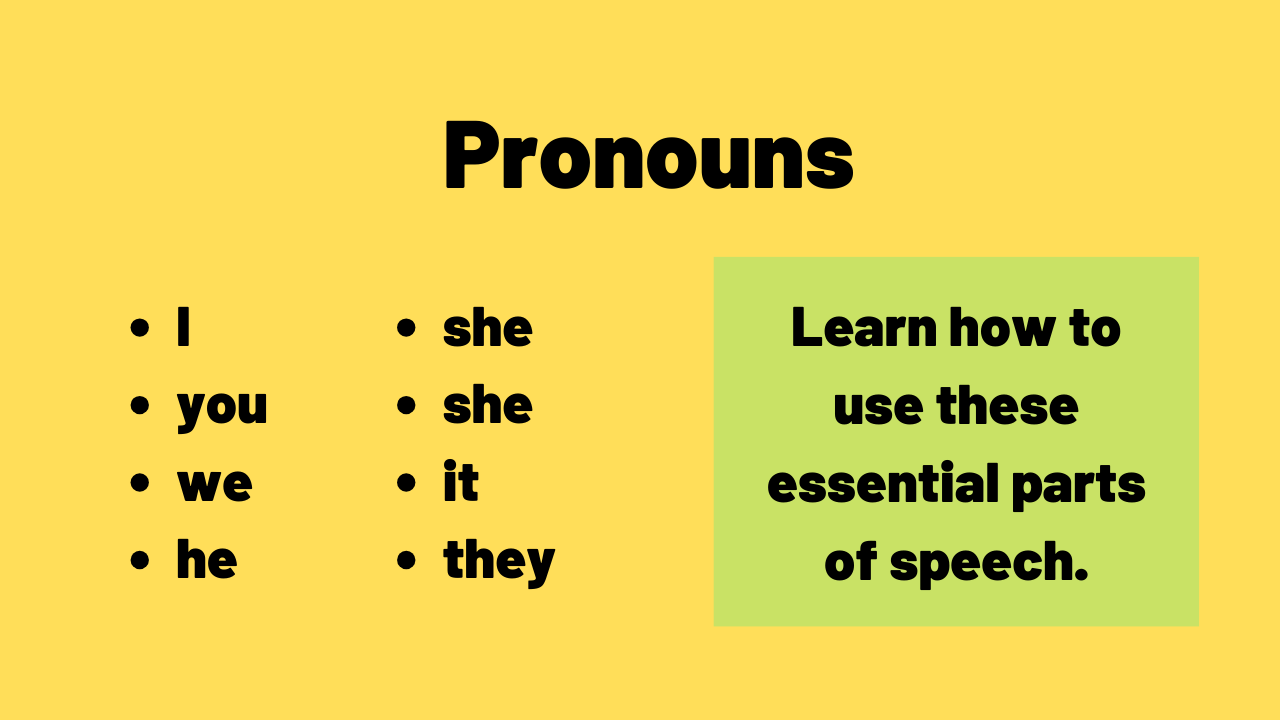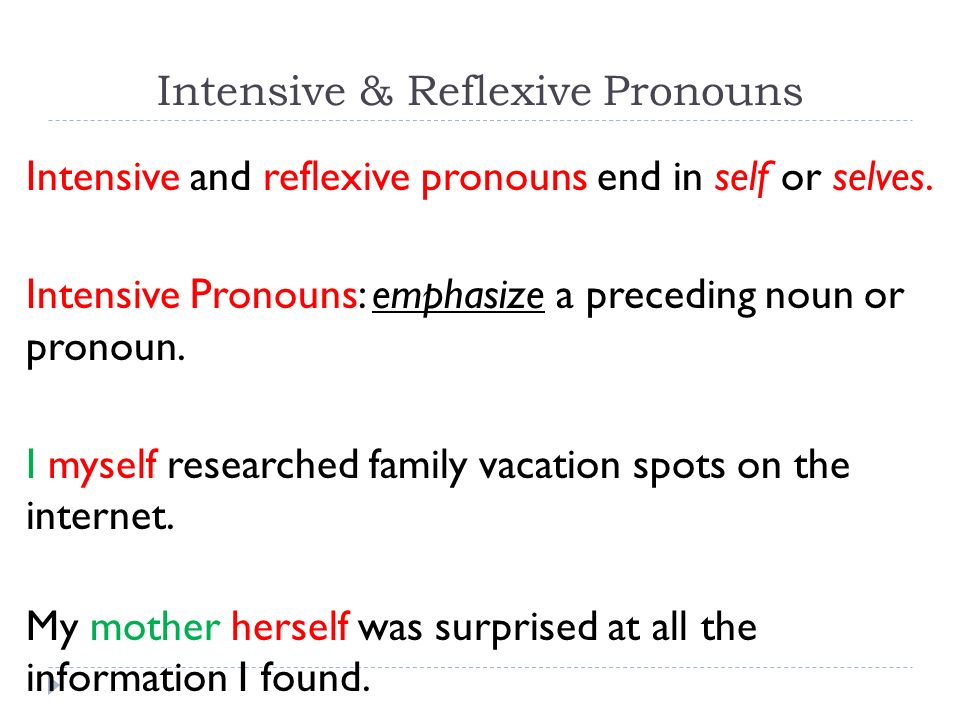Remember when you first started learning parts of speech in English? You know, back in the days of diagramming sentences on a chalkboard, back then, words like “he,” “she,” and “it” seemed pretty straightforward. But here’s a curveball: what about words like “someone,” “everybody,” or even “none.”
These are all examples of pronouns, but what is a pronoun exactly?
They’re not just your average parts of speech. Understanding “what is a pronoun” is key to proper grammar.
You see, these linguistic workhorses do much more than simply stand in for nouns to prevent repetition. They can also convey possession, ask questions, emphasize points, and refer to non-specific things or people.
Sounds complicated, but don’t worry!
Let’s learn all about what is a pronoun so you can gain better comprehension and apply them adeptly.
Table Of Contents:
- What is a Pronoun?
- Personal Pronouns
- Possessive Pronouns
- Reflexive and Intensive Pronoun Usage
- Indefinite Pronouns
- Relative Pronouns
- Interrogative and Demonstrative Pronouns
- FAQs – What is a Pronoun
- Conclusion
What is a Pronoun?
Pronouns refer to words that take the place of a noun or noun phrase, making sentences more concise and avoiding repetition.
Imagine telling a story about John and Mary without pronouns: “John gave Mary a book, then John said to Mary…” Exhausting right?
But with pronouns, it’s simply “John gave her a book, then he said…” See how much smoother that sounds?
In today’s world where understanding someone’s gender identity has become paramount, using correct gendered or preferred simple pronouns can help in expressing respect and inclusion. This may also involve using gender-neutral pronouns such as ‘they’ (singular) or even newly-coined ones like ‘ze’.
You might have heard reflexive pronouns being referred to as mirror images because they reflect back on another noun or pronoun already mentioned in the sentence. Reflexive examples include myself, yourself, etc., which can add emphasis or show an action done by oneself.
Let’s look at more pronoun examples and how to properly use them in English sentences.

Source: TED-IELTS
Personal Pronouns
A closer look at personal pronouns reveals their essential role in our language. Acting as the subject or object of a verb or preposition, they make communication more straightforward.
In simple terms, these refer to words that stand in for names of people or things when speaking or writing and examples are, I, me, you, we, us, he, him, she, her, they, them, and it.
Recently, there has been a rise in the utilization of gender-neutral pronouns for personal use. It is crucial to respect someone’s gender identity by using correct pronouns – it’s part and parcel of social etiquette. The introduction of ‘they’ as a singular personal pronoun has made conversations inclusive without assuming someone’s pronouns based on appearance alone.
We all make mistakes while learning grammar rules; but no worries.
Here is a common mistake: If you’re talking about one person (‘someone’), ensure your following reference also maintains singularity (‘their’), so instead say- if someone forgets their coat, remind him/her/they.
Pronouns are more than just grammar rules. They’re a way to express one’s identity and make sure everyone feels acknowledged in conversations. So let’s keep learning and respect each other’s preferred pronouns.
Possessive Pronouns
Do you ever wonder how to claim ownership in your sentences? It’s a cinch with possessive pronouns. These handy words help express belongings or relationships without sounding like a broken record.
Imagine telling a story about John and his new bike. Now, instead of saying “John’s bike” every time, wouldn’t it be simpler to use ‘his’?
“His” is an example of a possessive pronoun. They replace the noun phrases to avoid repetition and make our language flow more naturally.
We often get tangled up when differentiating between possessive adjectives (my, your) and possessive nouns (mine, yours). A golden rule is if there’s no noun after the word ‘your’, then switch it to ‘yours’.
For example: “This book is not mine; it’s yours.”
To recap quickly – English grammar rules provide us with various types of pronouns based on their function in sentences including subject pronoun sentence usage like “He runs”, object pronoun usage as in “John gave Mary the book”, and possessive pronoun usage, like “The bike is his”.
Using correct pronouns is crucial to ensure clarity in our communication. Whether it’s in email signatures or social media posts – make sure you get your pronouns right.
Reflexive and Intensive Pronoun Usage
We often use pronouns without a second thought, but do you know there’s more to these handy linguistic tools than meets the eye? Take reflexive and intensive pronouns for example. They might look identical (myself, yourself, herself…), but their roles in sentences are quite different.
A reflexive pronoun is like a boomerang – it brings the action back to the subject.
Let me illustrate: “John gave himself a pat on the back”. Here ‘himself’ refers back to John; he did something that affected him.
An intensive or emphatic pronoun also looks similar (myself, yourself…) but functions differently. It adds emphasis on an already existing noun or another personal pronoun within the sentence itself. So when we say “I myself baked this cake”, we’re really emphasizing who performed an action.
Fascinating right? But hold your horses before using them interchangeably because they can change the meanings of sentences if not used correctly.
A common mistake made while using these twins happens when reflexives replace subjects or objects in sentences that don’t refer back to anything – incorrect usage alert.
Remember that reflexive pronouns always need a noun earlier in the sentence they can reflect upon.
The rule of thumb here is pretty simple: If removing ‘yourself’, ‘himself’, etc., makes your sentence sound off, then you’ve got it wrong.
It is vast and complex, but fascinating. It’s a universe filled with rules and exceptions that guide how we communicate effectively. Whether you’re an English learner or a native speaker seeking to polish your skills, exploring the world of pronouns can be incredibly rewarding.

Indefinite Pronouns
Indefinite pronouns are non-specific references that keep our language flexible and interesting. If you’ve ever employed words like “someone,” “anything,” or “everyone”, then kudos to you, you’ve been using indefinite pronouns.
Indefinite pronouns do not point to any one individual or object in particular.
Let’s look at this sentence: ‘Someone left their jacket behind.’
The word ‘someone’ is an example of an indefinite pronoun – it doesn’t tell us who exactly left their jacket but it gives us enough information for context.
In contrast, let’s consider another scenario where we use a name instead: ‘John left his jacket behind.’
Now we know exactly who forgot his jacket because John is a definite noun. The beauty of these little words is how they bring variety into your speech and writing while still making sense.
Just remember – when wielding the power of indefinite pronouns, the goal is to keep things non-specific. It’s not about being vague; it’s about flexibility and fluidity in language.
Relative Pronouns
If you’ve ever wondered how to add more information about a noun without starting a new sentence, meet the relative pronoun.
A relative pronoun is like an introduction agent – it sets up additional info about nouns or phrases in your sentences.
These handy words act as connectors between two clauses in a sentence. The main clause stands alone with its own meaning while the subordinate one introduced by the relative pronoun provides extra details. To spot them, look for words like ‘who’, ‘which’, or ‘that’ introducing additional detail into your sentence.
‘Who’ and ‘whom’ refer to people, ‘who’ is used as a subject, while ‘whom’ acts as an object. ‘Which’ refers to things or animals, it introduces extra info about them.
Take these examples:
“The cat chased its tail.”
“Its tail was fluffy.”
Here we have two separate statements, but watch what happens when we introduce our friendly connector: “The cat chased its tail, which was fluffy.” Suddenly, there’s flow.
Interrogative and Demonstrative Pronouns
When it comes to asking questions, interrogative pronouns are the go-to. These include words like ‘who’, ‘what’, and ‘which’.
‘Who’ is used when referring to people, while ‘which’ caters more towards choices. So remember, next time you need help choosing between orange juice and milk at breakfast, just think “Which should I pick?”
If your question involves objects rather than people or choices—say for instance you spot an unfamiliar object—a telephone pole in this case—you might ask “What is that?”. Yes. You guessed it right; we use ‘what’ as our interrogative noun here.
Moving onto demonstratives now, these handy little tools distinguish one thing from another in sentences.
For example: “This grammar rule seems easier than that one.”
Here we have both forms of singular demonstratives — ’this’ indicating something close by (proximal), and ‘that’ referencing something further away (distal).
Demonstratives can act as both adjectives and pronouns, but don’t let this confuse you. As adjectives they describe nouns — as in “These grammar rules are fun”. But when used as pronouns, they stand in for nouns or noun phrases— like “This is fun.”
FAQs – What is a Pronoun
What are the 8 types of pronouns?
The eight types include personal, possessive, reflexive, intensive (emphatic), indefinite, relative, interrogative, and demonstrative pronouns.
What is a pronoun in simple words?
A pronoun replaces a noun or noun phrase to avoid repetition and make sentences clearer.
What is an example of a pronoun?
An example could be “he” replacing “John” in the sentence: John said that he likes pizza.
What are examples of pronouns?
Pronouns include I, me, mine, myself, you, yours, yourself, he, him, his, himself, she, her, hers, herself, etc. There’s quite an extensive list.
Conclusion
So, we’ve answered the question “What is a pronoun”. And yes, understanding pronouns may seem daunting at first. But now you know!
You’ve seen how personal pronouns can make sentences clearer and avoid repetition. You’ve discovered that possessive pronouns show ownership in a snap!
You’ve explored reflexive and intensive ones for emphasis or self-reference. Don’t forget those indefinite types either – they’re handy when specifics aren’t needed. And let’s not overlook our friends – relative, interrogative, and demonstrative ones – connecting ideas, asking questions, and pointing out details respectively.
Pronouns are more than simple stand-ins; they’re key to expressive language use. AI content marketing automation tools like BrandWell are adept are using pronouns to make sentences flow smoother but you could still use your knowledge of proper pronoun usage to make AI content better. So keep practicing them!